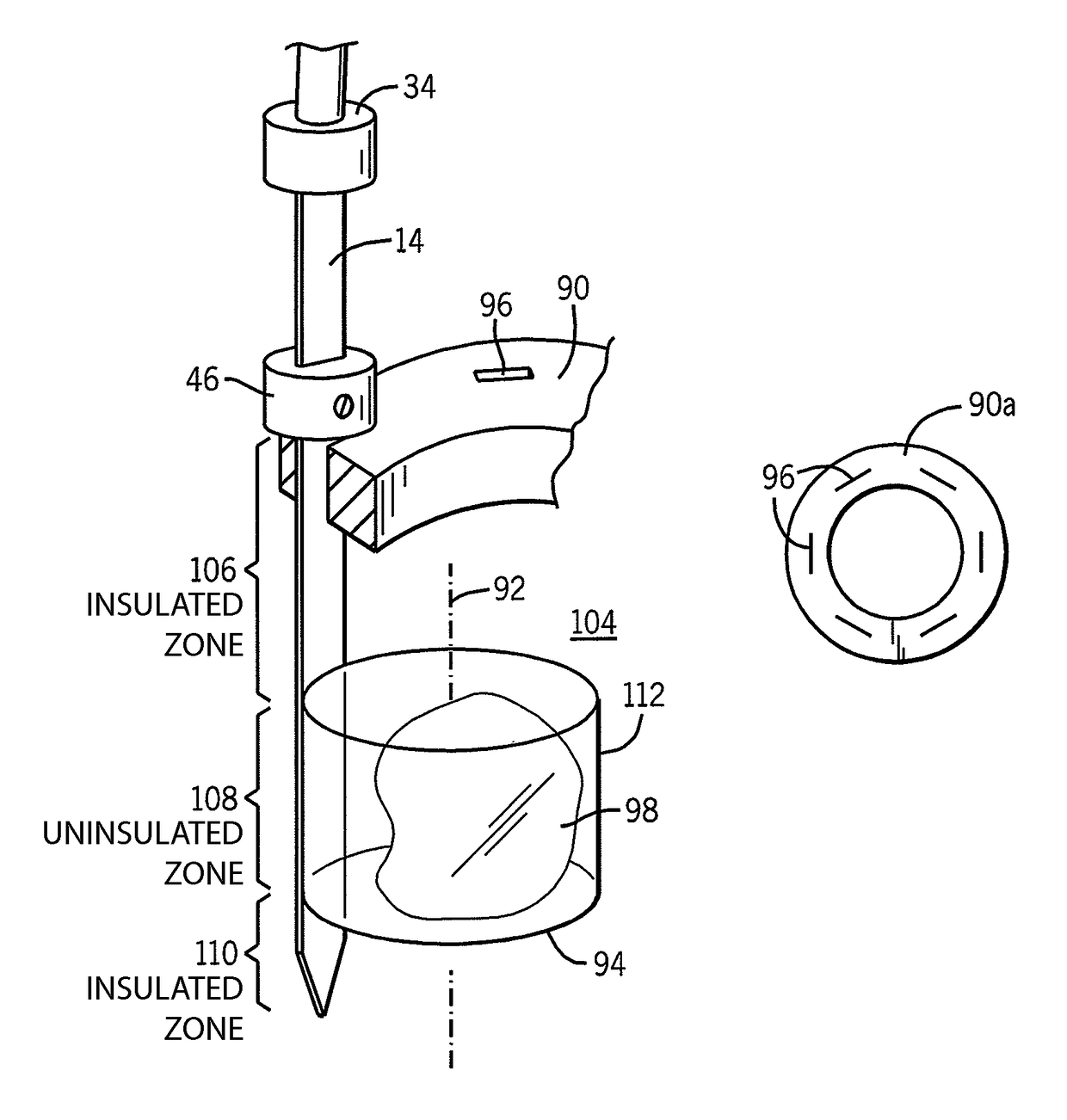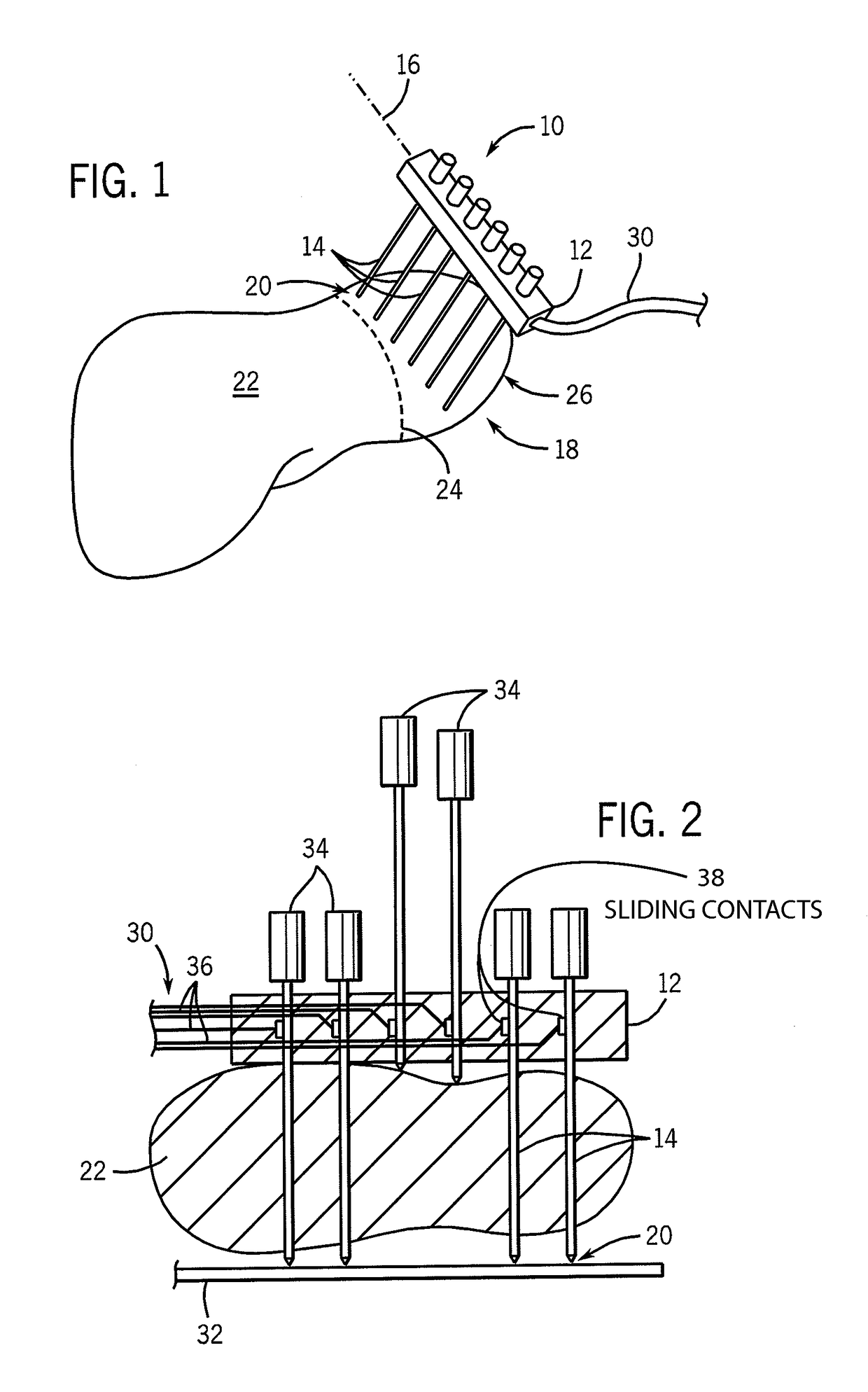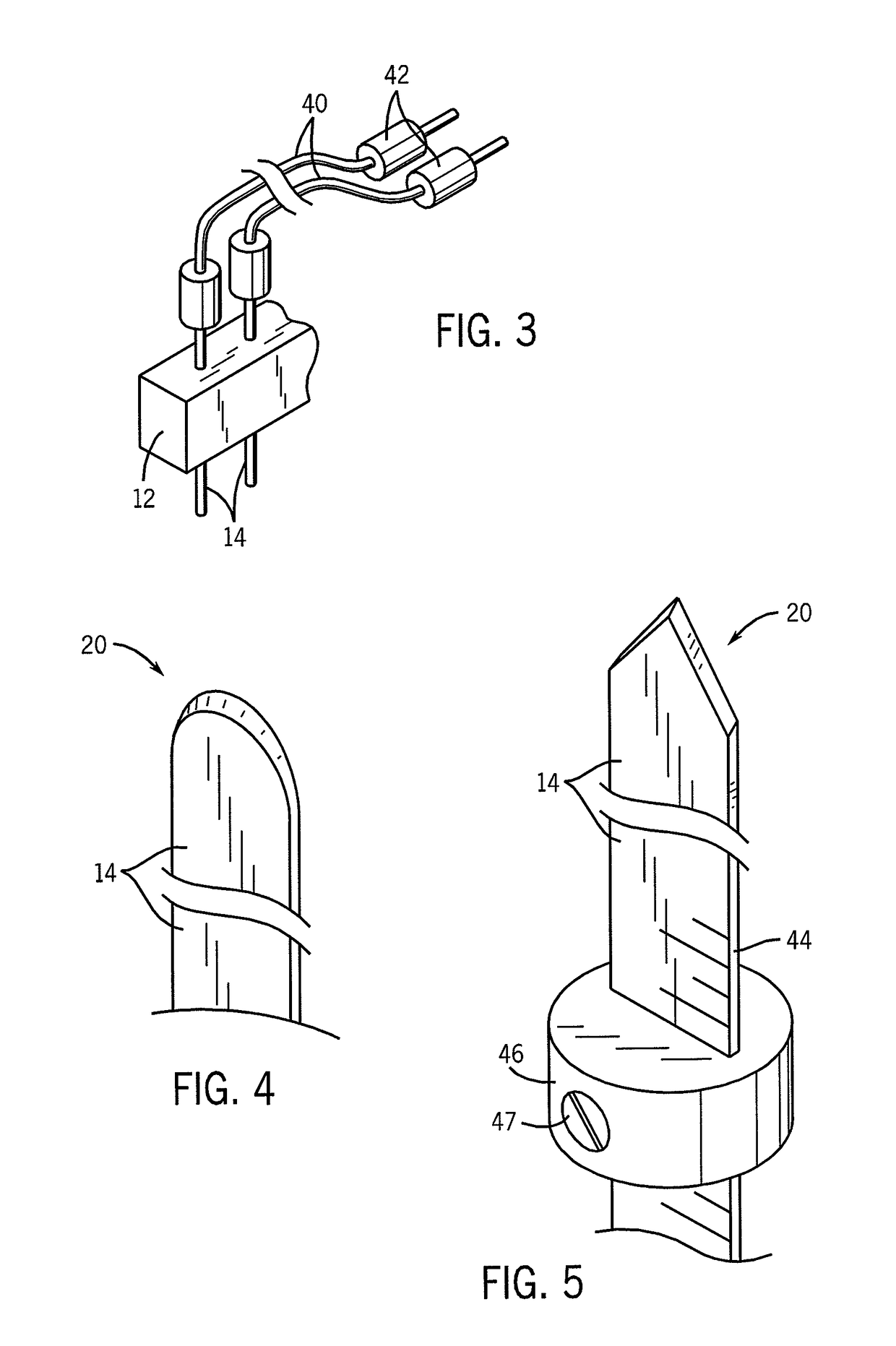Circumferential electrode array for tissue ablation
a tissue ablation and circumferential electrode technology, applied in medical science, surgery, diagnostics, etc., can solve the problems of inability to surgically remove or resected tumors, and inability to achieve tumor removal. , to achieve the effect of improving the heating of large tumor areas, uniform temperature gradient, and reducing the loss of electrode effectiveness
- Summary
- Abstract
- Description
- Claims
- Application Information
AI Technical Summary
Benefits of technology
Problems solved by technology
Method used
Image
Examples
Embodiment Construction
I. Partitioning Electrode Array
[0059]Referring now to FIG. 1, an electrode array assembly 10 of a first embodiment of the present invention includes a holder 12 supporting a number of elongate electrodes 14 spaced along an axis 16 to define a generally planar surface 18 among them. The surface 18, for example, may be 8 cm long and 10 cm wide.
[0060]Sharpened tips 20 of the elongate electrodes 14 may be inserted into the liver 22 at an insertion line 24 to isolate one lobe 26 of the liver 22 for resection. The elongate electrodes 14 may, for example, be constructed of a biocompatible stainless steel.
[0061]The holder 12 may be, for example, an insulating plastic block having holes cut in the holder 12 to receive metallic shafts of the elongate electrodes 14 at regular intervals. In a preferred embodiment, the separation of the electrodes is approximately 1.5 cm. The elongate electrodes 14 may be fixed to the holder 12 so as to be moved in unison for rapid insertion. Each elongate elect...
PUM
 Login to View More
Login to View More Abstract
Description
Claims
Application Information
 Login to View More
Login to View More - R&D
- Intellectual Property
- Life Sciences
- Materials
- Tech Scout
- Unparalleled Data Quality
- Higher Quality Content
- 60% Fewer Hallucinations
Browse by: Latest US Patents, China's latest patents, Technical Efficacy Thesaurus, Application Domain, Technology Topic, Popular Technical Reports.
© 2025 PatSnap. All rights reserved.Legal|Privacy policy|Modern Slavery Act Transparency Statement|Sitemap|About US| Contact US: help@patsnap.com



